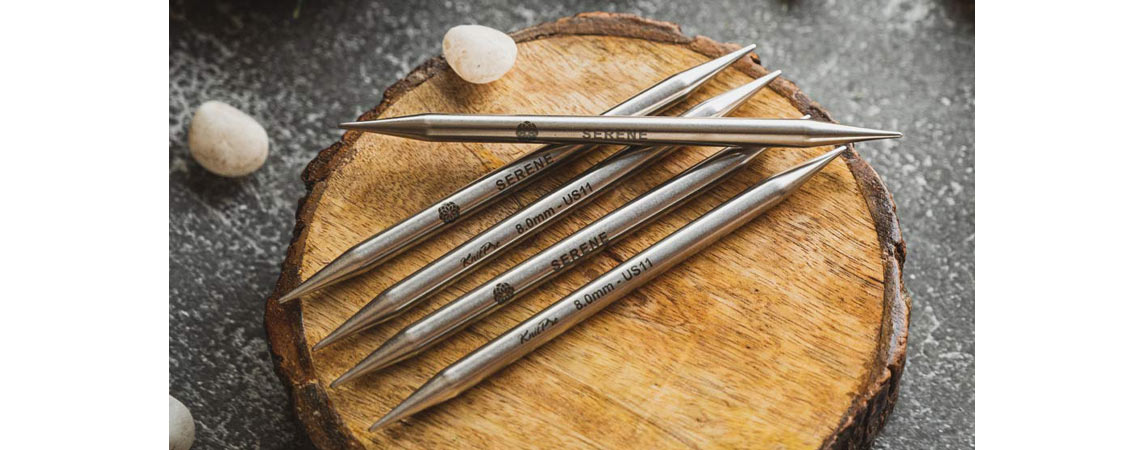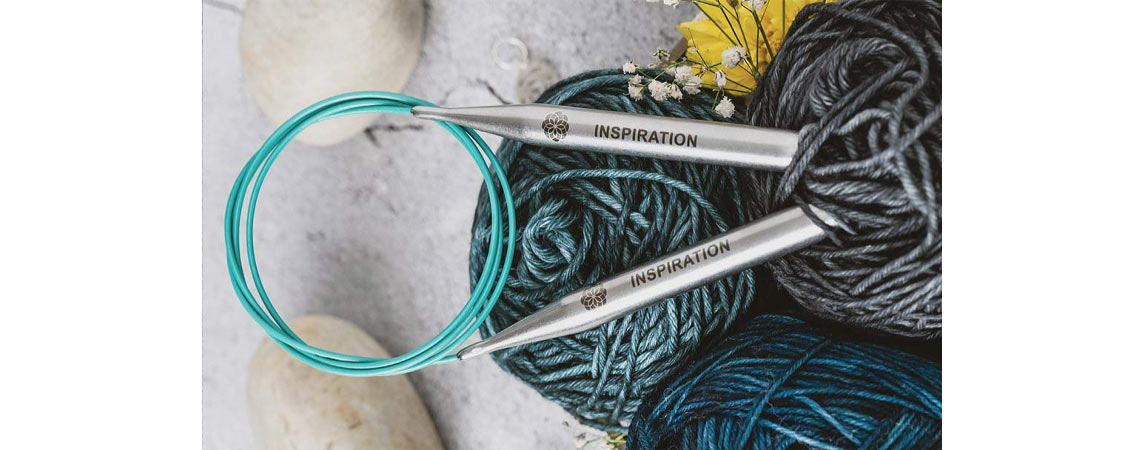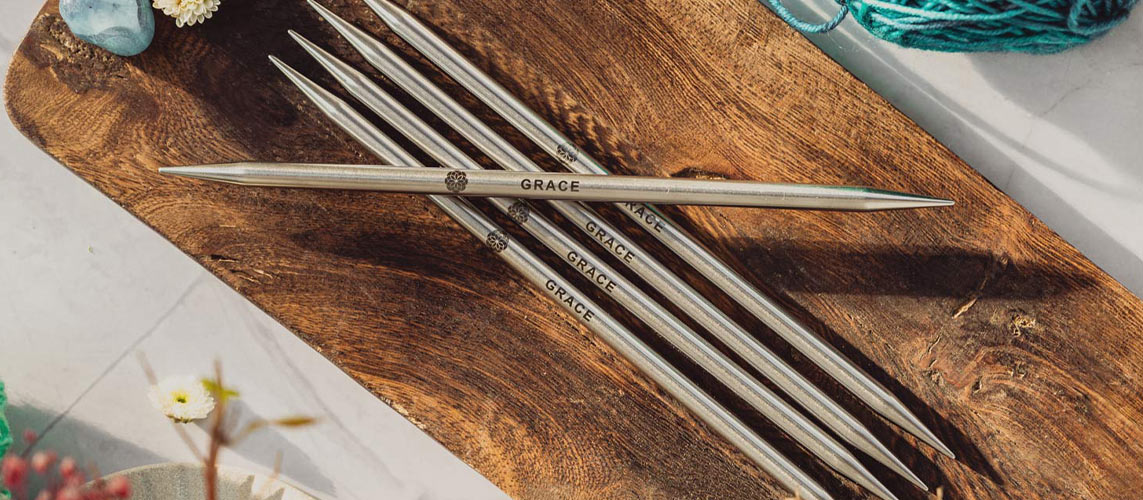Knitting socks can be a fun project. There are few things that give you as much pleasure to wear as handknit socks. Sock knitting may sound challenging, but with the right set of knitting needles and patience, it is definitely achievable. Needle options include double pointed (DPNs), fixed circular and interchangeable circular needles. The choice will be yours as soon as you decide which type of needle suits you best. You might be comfortable balancing 4 DPNs or you could discover the fun of “magic loop”. If you enjoy making socks, you may even become so proficient that you learn how to knit two socks at a time. In this blog, we will examine methods for knitting socks and how to choose the knitting needles that suit your best.
How to choose the best knitting needles for sock knitting?
Dedicated sock knitters work with fine yarns on thin needles. The most common needle size for a 4 ply traditional socks are 2.25mm (US 1) to 2.5mm (US 1.5) but you can go for 3mm (US 2.5) -3.50 mm (US 4). But, if you are a beginner the knitting needles must be chosen according to your comfort. But, there are many things to look out for. Dropped stitches are common, so the focus is important. It is also important that you use the right needles. There are a variety of types and materials from which to choose. As a rule, sock knitters want needles that offer the right amount of “grip”. A smooth texture is also considered important since it allows the yarn to glide easily. Therefore, Stainless-steel knitting needles are a good choice.
Three options can be found in the Mindful Collection: Double Points, Fixed Circular needles or Interchangeable circular needles. These smooth needle tips work with all kinds of yarn and even the smallest size work very well. For circular needles, the cables come in fixed and interchangeable options along with fixed and swivel cables.
To help you make choices, let’s take a look at the knitting needles that work best for socks.
Knitting Socks on Double Pointed Needles (DPNS)
Double pointed needles are preferred by many sock knitters. They have been the oldest tool for knitting in the round. These needles come in a set of 5. You evenly distribute stitches on 3 or 4 needles and knit with the 4th or 5th one. You may find it clumsy to handle double points at first, but with patience, you will discover the best way of working with double point needle. For more information on the subject, take a look at our discussion on using double pointed needles. There are also many videos online which demonstrate the art of working with DPNs.

Sock Knitting on Circular Needles
In the category of circular needles, there is a choice of fixed circular knitting needles or interchangeable circular needles. Both these options are perfectly fine as long as you have the size and length that you need to knit socks. We suggest that you either go with a long circular needle with an 80cm (32″) cable or a small circular needle with a 40cm (16″) cable. For circulars, the needle length is measured from one needle tip to the other including the cable. The fixed circular needle comes in a 25 cm (10”) length which may be preferable for knitting socks in the round.
Magic Loop with one Circular Needle
Another option is the magic loop technique, which is worked on a circular needle with a longer cable and an interchangeable circular needle is a good option with this technique. To understand how it is done, it is best to see it demonstrated. There are multiple videos online. Just google “magic loop method”. The thing to keep in mind for this technique is that the cables should be smooth. It should be between 56 cm (32″) or even 94 cm) 48″ long.

Two Circular Knitting Needles
The two circulars are an advanced method mostly used by experienced knitters. In this method, you can knit two socks at once using two separate circular knitting needles, with the same size needle and the same cable length. The most common needle length for this technique is usually 40 cm (16″). With two separate needle tips of circular needles you can make socks even in the smallest sizes. Also, for the experienced knitters this solves the problem of avoiding the second pair of socks. The two circular needles allows you to knit two socks at one time.
However, knitters generally prefer to knit two socks at the same time on one 32" circular knitting needle.
Now that you have some information on the sock knitting needles, decide on the yarn and pattern. The choice is yours. From warm woolen to soft cotton, the options are endless. Choose stretchy cast on methods, knit as the pattern suggests or according to your design, bind of neatly and weave the ends. Beginners are advised to start with a simple basic pattern. After making few pairs, you can try to add strips and designs. There are many free ones to be found online. Just remember to first knit a gauge swatch.
For more information on needles, tools and techniques, be sure to follow our blog.












